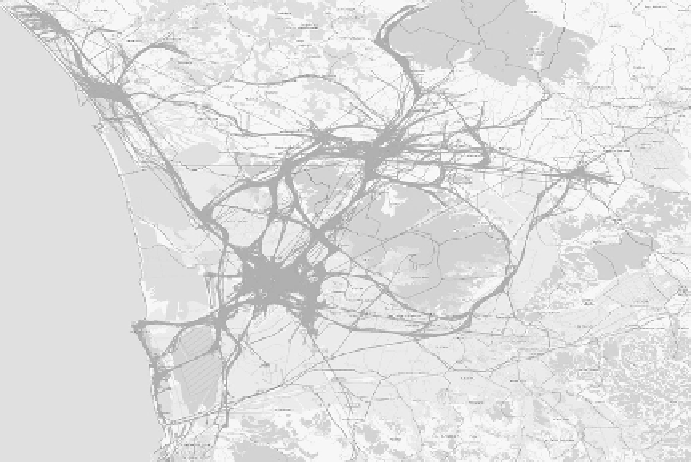Database Reference
In-Depth Information
Figure 7.6 The trajectories obtained from the commuter movement analysis.
of this semantic-enriched mobility knowledge discovery process, the concept of
semantic trajectory behavior. To reach this objective the semantic information
may be integrated into the process mainly in two ways. On the one hand, it is
the KDD analyst who, using the M-Atlas primitives, finds the semantic behavior
properly exploiting the system functions with appropriate parameter. On the
other hand, we also have pointed out the possibility of using ontologies dur-
ing the postprocessing step to represent explicitly the semantic information and
thus automatize the discovery process. In this case we have added an automatic
deductive step where application domain knowledge is explicitly represented in
the process. In conclusion, the main message derived from the experience of
extracting behavior from data is that data mining alone - even when applied to
large masses of trajectory data - is not enough to transform data into knowledge;
we need a more complex process involving semantic information.
7.5 Bibliographic Notes
The knowledge discovery process was first introduced in
Fayyad et al.
(
1996
)
for the relational case where the main KDD steps are presented and discussed.
The KDD process presented here is the one that is at the basis of most of the data
mining and knowledge discovery research. The mobility knowledge discovery
process proposed here is basically the Fayyad one, adapted for the trajectory
case and eventually enriched with a new deductive step with ontologies. In

